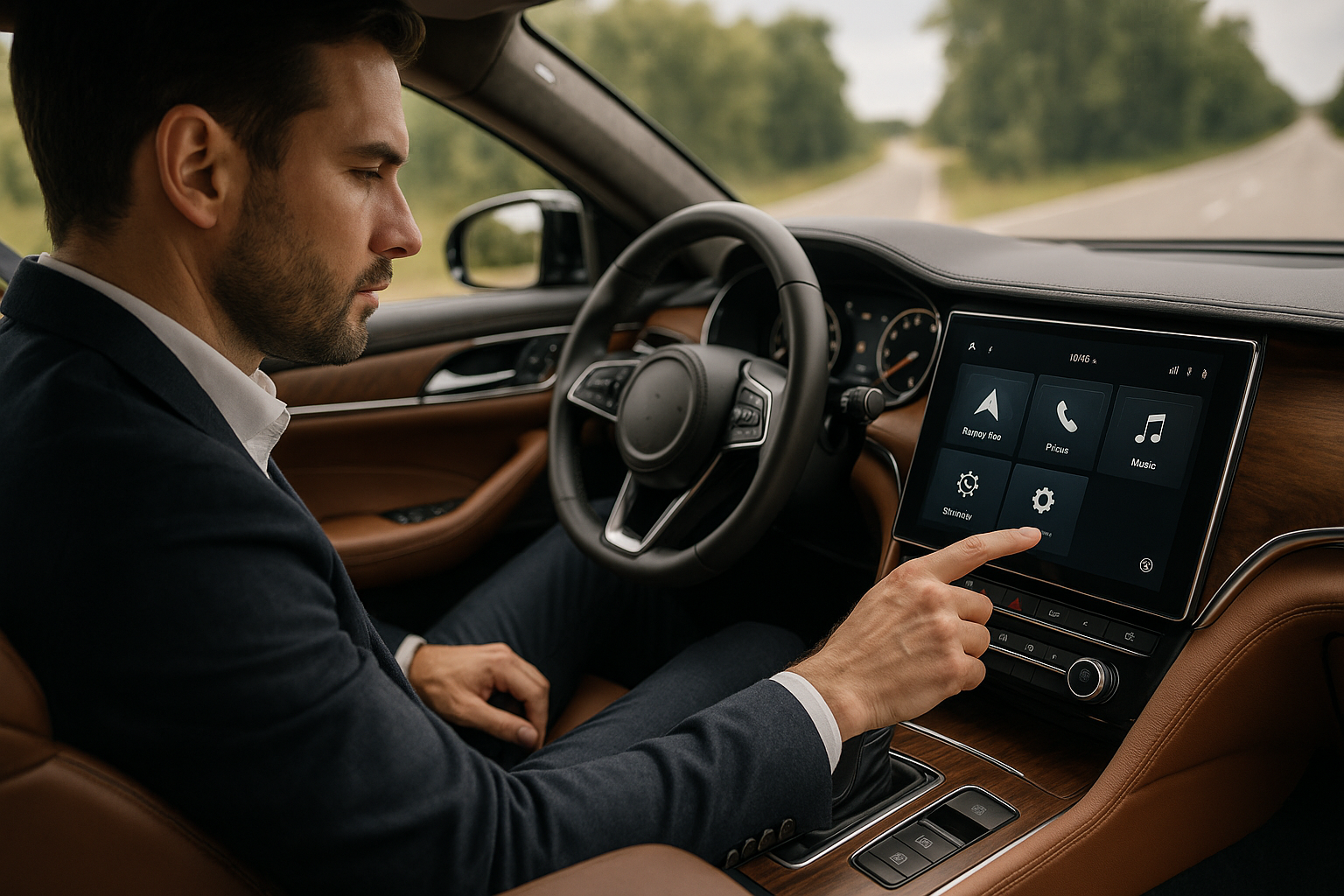Redefining Luxury: The Emergence of High-tech Conveniences in Modern Vehicles
The automobile has evolved tremendously since its birth in the late 19th century, from a simple means of transportation to a symbol of status, luxury, and technological advancement. Modern vehicles are now equipped with high-tech conveniences that go beyond traditional leather upholstery and polished wood trim. This article delves into these advancements, exploring how they have redefined the meaning of luxury in the automotive world.

Luxury Vehicles: A Historical Perspective
The concept of luxury in vehicles has evolved over time. Initially, luxury was associated with size, power, and exclusivity. Large vehicles with powerful engines and limited production numbers were considered the epitome of luxury. These vehicles were typically adorned with fine materials like leather, wood, and chrome.
As technology advanced, the definition of luxury began to shift. Vehicles started incorporating high-end audio systems, advanced safety features, and sophisticated comfort controls. However, the dawn of the 21st century brought about a significant change in the perception of luxury.
The Advent of Technological Luxury
Today’s luxury vehicles are as much about technology as they are about comfort and aesthetics. High-tech conveniences have become a defining factor of luxury. These include features like touch-screen infotainment systems, heads-up displays, wifi connectivity, voice recognition, and advanced driver assistance systems.
Today’s discerning consumers look for technology that enhances their driving experience, ensures their safety, and provides supreme comfort. These tech advancements are not mere gimmicks; they have practical applications that make driving easier, safer, and more enjoyable.
Impact and Benefits of High-Tech Conveniences
The integration of high-tech conveniences in vehicles has multiple benefits. Firstly, they improve driver safety. Features like forward-collision warning, automated emergency braking, and blind-spot detection can prevent accidents and save lives.
Secondly, these technologies enhance comfort and convenience. For instance, adaptive cruise control can adjust your vehicle’s speed to maintain a safe distance from the car ahead, making long drives less tiring. Similarly, voice recognition allows for hands-free control of various car functions, thereby reducing distraction.
Challenges in Incorporating High-Tech Conveniences
Despite their numerous benefits, incorporating high-tech conveniences in vehicles is not without challenges. The primary challenge is the complexity of these systems. They require sophisticated software and hardware, which can be expensive and difficult to install and maintain.
Moreover, as vehicles become more connected, they are also becoming more vulnerable to cyber threats. Automakers need to ensure that their high-tech systems are secure from hacking and data breaches.
Looking Ahead: The Future of High-Tech Conveniences
As technology continues to advance, we can expect even more high-tech conveniences to emerge in the automotive world. Future vehicles might incorporate augmented reality displays, biometric authentication, and even AI-powered personal assistants.
In conclusion, high-tech conveniences have revolutionized the concept of luxury in vehicles. They have not only made driving safer and more comfortable but also more enjoyable. However, automakers need to overcome the challenges associated with these technologies to ensure their successful integration into future vehicles. As we move forward, it will be exciting to see how these conveniences evolve and shape the future of luxury vehicles.






